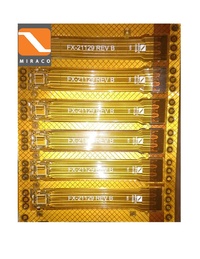
Photo from wikipedia
Low-temperature processed mesoporous nanocrystal thin films are platforms for fabricating functional composite thin films on flexible substrates. Using a random arrangement of anisotropic nanocrystals can be a facile solution to… Click to show full abstract
Low-temperature processed mesoporous nanocrystal thin films are platforms for fabricating functional composite thin films on flexible substrates. Using a random arrangement of anisotropic nanocrystals can be a facile solution to generate pores without templates. However, the tendency for anisotropic particles to spontaneously assemble into a compact structure must be overcome. Here, we present a method to achieve random networking of nanorods during solution phase deposition by switching their ligand-stabilized colloidal nature into a charge-stabilized nature by a ligand-stripping chemistry. Ligand-stripped tungsten suboxide (WO2.72) nanorods result in uniform mesoporous thin films owing to repulsive electrostatic forces preventing nanorods from densely packing. Porosity and pore size distribution of thin films are controlled by changing the aspect ratio of the nanorods. This template-free mesoporous structure, achieved without annealing, provides a framework for introducing guest components, therefore enabling our fabrication of inorganic nanocomposite electrochromic films on flexible substrates. Following infilling of niobium polyoxometalate clusters into pores and successive chemical condensation, a WOx-NbOx composite film is produced that selectively controls visible and near-infrared light transmittance without any annealing required. The composite shows rapid switching kinetics and can be stably cycled between optical states over 2000 times. This simple strategy of using anisotropic nanocrystals gives insight into mesoporous thin film fabrication with broader applications for flexible devices.
Journal Title: Nano letters
Year Published: 2017
Link to full text (if available)
Share on Social Media: Sign Up to like & get
recommendations!